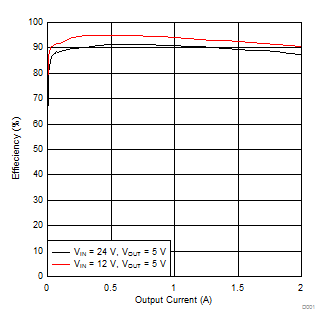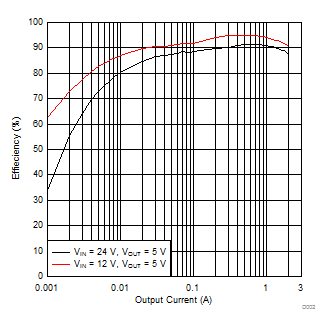SLVUAP3A April 2016 – October 2021 TPS54202
2.2 Efficiency
The efficiency of this EVM peaks at a load current of about 0.5 A – 1 A, and then decreases as the load current increases towards full load. Figure 2-1 shows the efficiency for the TPS54202EVM-716 at an ambient temperature of 25°C.
 Figure 2-1 TPS54202EVM-716 Efficiency
Figure 2-1 TPS54202EVM-716 EfficiencyFigure 2-2 shows the efficiency for the TPS54202EVM-716 on a semi-log scale to better show light load efficiency. The ambient temperature is 25°C.
 Figure 2-2 TPS54202EVM-716 Low Current Efficiency
Figure 2-2 TPS54202EVM-716 Low Current EfficiencyThe efficiency may be lower at higher ambient temperatures, due to temperature variation in the drain-to-source resistance of the internal MOSFET.